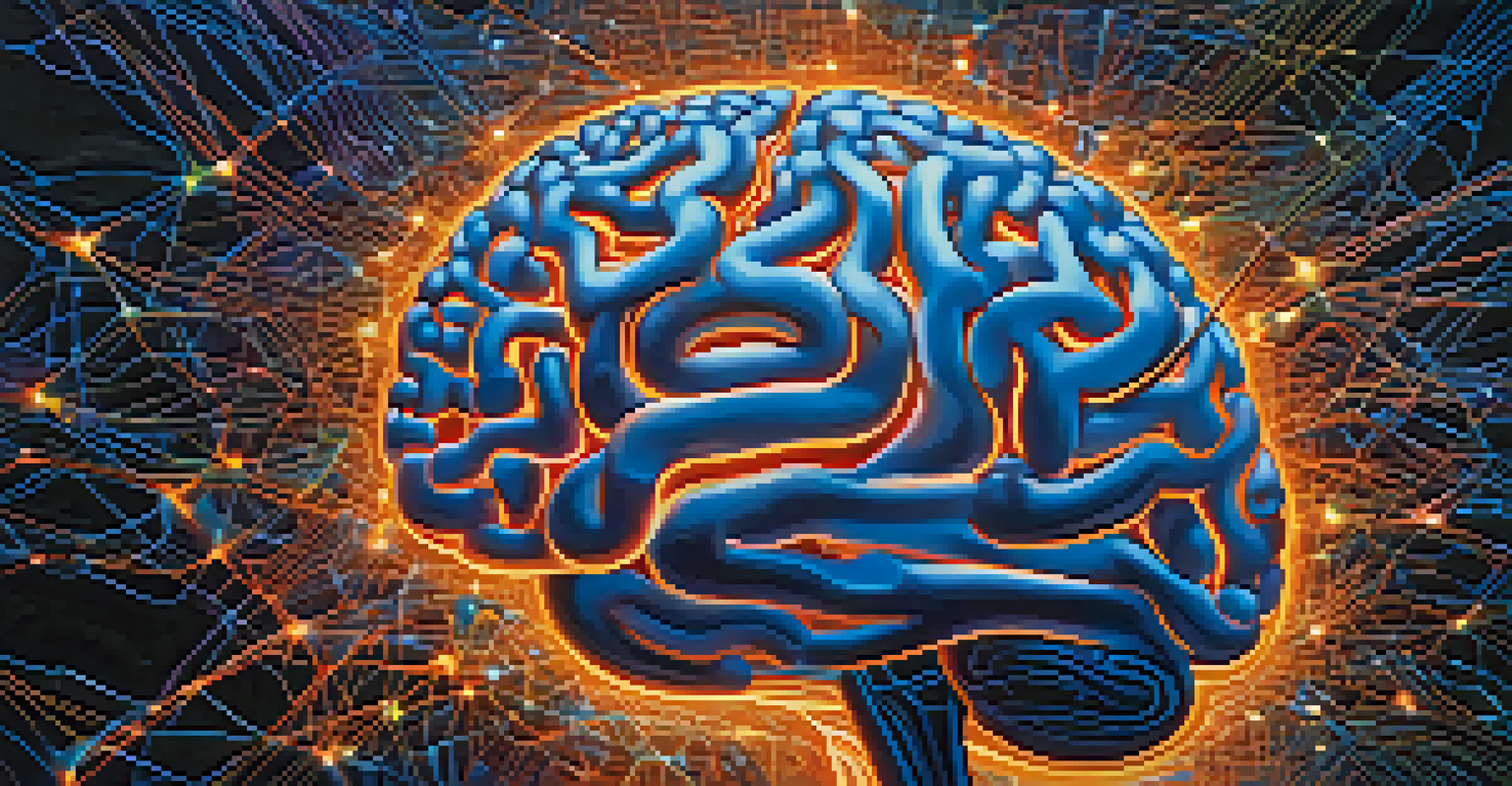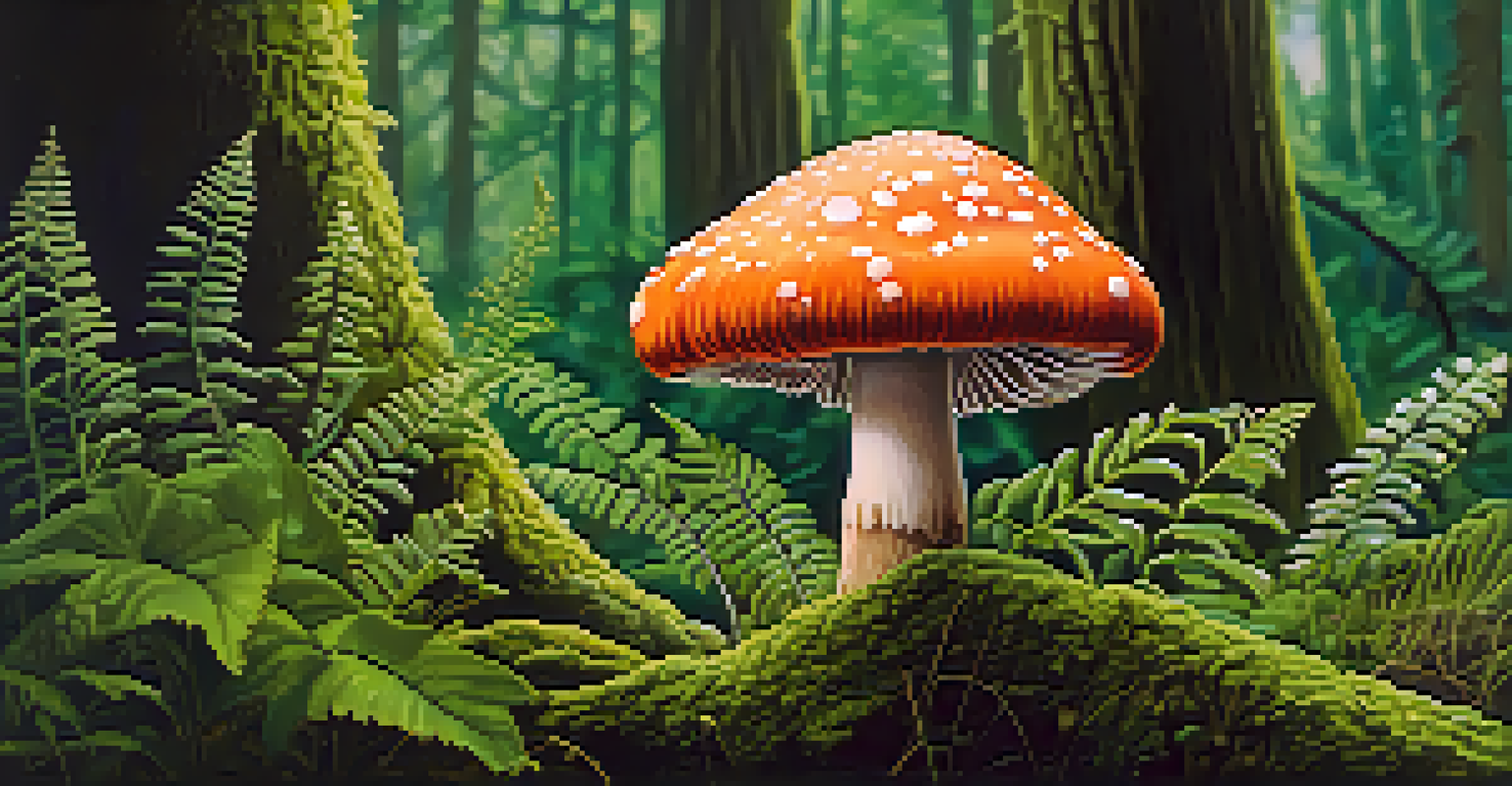The Relationship Between Hallucinogens and the DMN

Understanding the Default Mode Network (DMN)
The Default Mode Network (DMN) is a network of brain regions that are active when we are at rest and not focused on the external environment. It plays a crucial role in self-referential thoughts, daydreaming, and even memory retrieval. Essentially, it's like the brain’s background music—always playing, even when we’re not consciously tuning in.
The greatest discovery of my generation is that a human being can alter his life by altering his attitude.
Research shows that the DMN is involved in our sense of self and personal narrative. When we reflect on our past or contemplate the future, the DMN lights up, showcasing its importance in our cognitive processes. Think of it as the storyteller of your mind, weaving together your experiences and thoughts.
Understanding the DMN is vital when we explore how substances like hallucinogens affect our brain activity. By examining this relationship, we can uncover fascinating insights about consciousness, perception, and the very nature of reality itself.
What Are Hallucinogens?
Hallucinogens are substances that can alter perception, mood, and various cognitive processes, often leading to experiences that differ from reality. Examples include psychedelics like LSD, psilocybin (found in magic mushrooms), and ayahuasca. These substances can induce vivid hallucinations, profound changes in thought, and shifts in emotional states.

Historically, many cultures have used hallucinogens for spiritual and therapeutic purposes. For instance, indigenous tribes in South America have long utilized ayahuasca in their rituals for healing and insight. In modern times, there's been a resurgence of interest in their potential therapeutic benefits, especially in treating conditions like PTSD and depression.
DMN's Role in Self-Reflection
The Default Mode Network (DMN) is crucial for self-referential thoughts and personal narratives, acting like the storyteller of our minds.
While the effects of hallucinogens can be profound, they also come with risks. Understanding their impact on the brain, particularly the DMN, is essential for harnessing their benefits while minimizing potential negative effects.
The Interaction Between Hallucinogens and the DMN
Research indicates that hallucinogens significantly alter the activity of the DMN. When someone takes a psychedelic, studies show a decrease in DMN connectivity, which can lead to a dissolution of the ego—a feeling of losing one's sense of self. This phenomenon is often described as an 'ego death' experience, where individuals report a sense of unity with the universe.
Psychedelics can help us understand mental health and consciousness in new ways.
The reduction in DMN activity could explain the profound alterations in consciousness reported by users. For many, this leads to feelings of interconnectedness and insights that feel deeply spiritual or enlightening. It’s as if the usual boundaries of the self are blurred, allowing for new perspectives.
Interestingly, this temporary disruption of the DMN may also promote creativity and new ways of thinking. People often report coming up with unique ideas or solutions during and after psychedelic experiences, suggesting that a more flexible brain state can foster innovation.
Benefits of Hallucinogens on Mental Health
Recent studies have highlighted the potential benefits of hallucinogens in treating various mental health disorders. Conditions like anxiety, depression, and PTSD have shown promising responses to psychedelic therapy. This is particularly intriguing given the current mental health crisis and the need for new treatment options.
One reason for these benefits could be the way hallucinogens affect the DMN. By reducing rigid thought patterns associated with mental illness, these substances may help individuals break free from negative cycles of thinking. Imagine a bird finally escaping a cage, soaring freely into the sky—this is what many users describe feeling.
Hallucinogens Alter DMN Activity
Hallucinogens significantly change DMN connectivity, leading to experiences such as ego dissolution and enhanced creativity.
Moreover, the insights gained during these experiences can lead to lasting changes in perspective and behavior. Patients often report feeling more connected to themselves and others, which can enhance their overall well-being and resilience.
Challenges and Risks of Using Hallucinogens
Despite their potential benefits, there are challenges and risks associated with using hallucinogens. Not everyone responds positively; some may experience anxiety, paranoia, or negative psychological reactions during their experiences. It’s crucial to approach these substances with caution and respect.
Additionally, the variability in individual responses means that what works for one person may not work for another. Factors like dosage, setting, and one's mental state can all influence the outcome. Think of it like a recipe—changing even one ingredient can alter the dish entirely.
Professional guidance and supportive environments can help mitigate these risks. Many researchers advocate for controlled settings where trained therapists can facilitate experiences, ensuring safety and maximizing therapeutic potential.
The Future of Research on Hallucinogens and the DMN
As interest in the therapeutic potential of hallucinogens grows, so does the need for rigorous scientific research. Studies are increasingly exploring how these substances interact with brain networks like the DMN, aiming to understand their effects on consciousness and mental health more deeply. This is an exciting frontier in neuroscience and psychology.
Future research could unlock even more benefits, leading to innovative treatments for various mental health conditions. Imagine a world where psychedelic therapy is as common as traditional therapy—a future where profound healing is accessible to many.
Therapeutic Potential of Psychedelics
Recent studies suggest that hallucinogens may effectively treat mental health disorders by breaking negative thought patterns and fostering new perspectives.
However, it’s crucial to balance enthusiasm with responsibility. Continued research must prioritize safety, ethics, and comprehensive understanding to ensure that we navigate this complex terrain wisely.
Conclusion: Embracing the Complexity of Hallucinogens
The relationship between hallucinogens and the DMN is a fascinating area of study that challenges our understanding of consciousness and mental health. As we peel back the layers of this intricate connection, we uncover both the potential benefits and the challenges these substances present.
Much like a complex tapestry, the threads of neuroscience, psychology, and spirituality weave together to create a rich narrative about human experience. Embracing this complexity allows for a more nuanced view of hallucinogens and their role in our lives.

Ultimately, as research progresses, it’s essential to approach these substances with both curiosity and caution. Understanding their impact on the DMN may not only enhance our knowledge of the brain but also pave the way for innovative treatments that could transform mental health care.